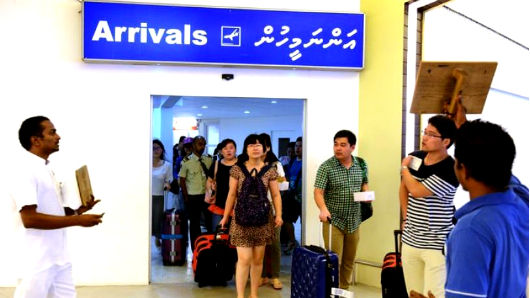Tourist arrivals increase in August as occupancy rate continues to fall
After registering a four percent decline in July, arrivals from China increased by 7.8 percent in August despite a slowdown in the Chinese economy and a surprise devaluation of the Yuan. China remains the largest source market for tourists to the Maldives with a 31.6 percent market share.

04 Oct 2015, 9:00 AM
Tourist arrivals to the Maldives increased by 5.7 percent in August compared to the same period last year, reaching a total of 110,144 visitors during the month.
The occupancy rate, however, declined by 4.1 percent from 75.2 percent in August 2014 to 71 percent in August 2015. The total bednights also fell by 3.6 percent, according to statistics from the tourism ministry.
The occupancy rate in resorts fell from 83.5 percent to 79.3 percent, but rose in guesthouses from 16.9 percent to 25.2 percent.
The occupancy rate has steadily fallen this year. The average duration of stay also fell from 6 days to 5.5 days.
Become a member
Get full access to our archive and personalise your experience.
Already a member?
Discussion
No comments yet. Be the first to share your thoughts!
No comments yet. Be the first to join the conversation!
Join the Conversation
Sign in to share your thoughts under an alias and take part in the discussion. Independent journalism thrives on open, respectful debate — your voice matters.




